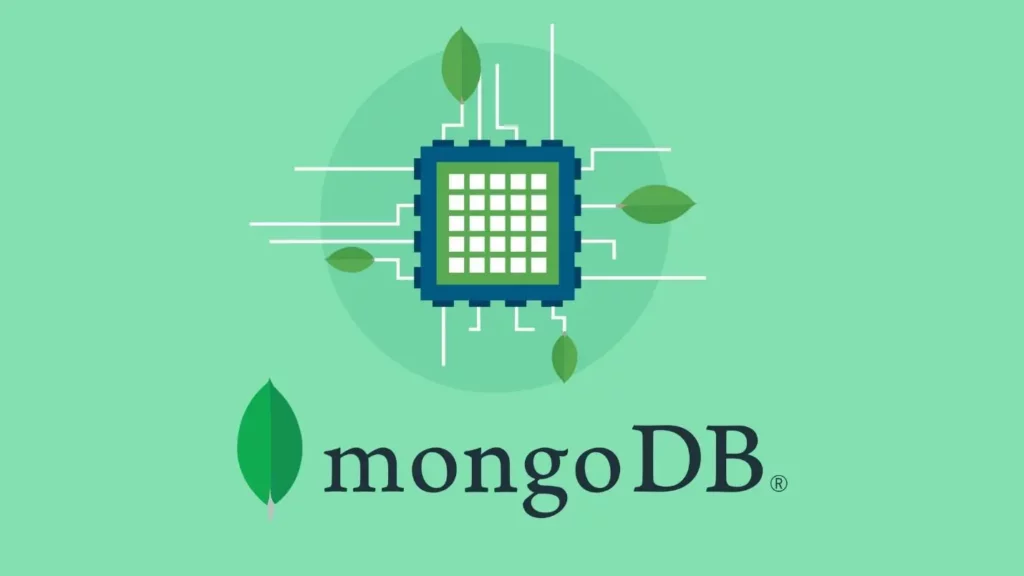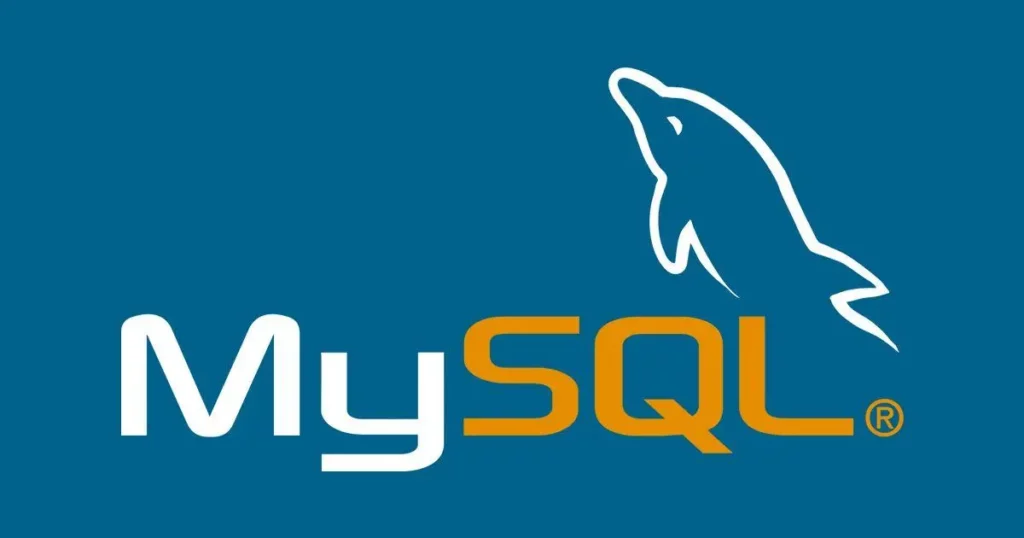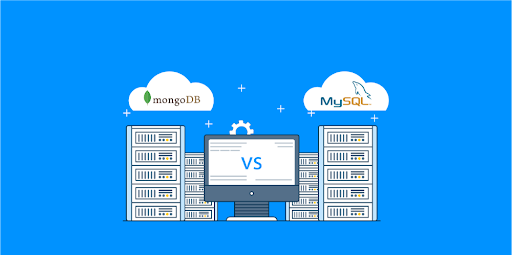Highlights
- MongoDB uses flexible, schema-less documents (NoSQL), whereas MySQL uses tables and rows (relational).
- With sharding, MongoDB can scale horizontally, whereas MySQL can only scale vertically and support read replication.
- MySQL needs preset schemas, whereas MongoDB’s schema-less structure allows for greater flexibility.
- While MySQL is geared for read operations but has slower data insertion, MongoDB excels in write performance.
- Both have extensive community support, open-source licensing, several programming languages, user-friendly interfaces, and indexing.
It won’t be wrong to say that databases are the ones operating our everyday life. From fetching our favorite songs to making online transactions, data is stored and retrieved when needed.
With a variety of data management systems, it is difficult to analyze which one is best. This article particularly explains the difference between MongoDB vs MySQL.
Companies requiring referential integrity and structured query language go for good old MySQL database management systems. Companies who want a more flexible database, go with the option of MongoDB.
However, each database has its own positives and negatives. So, before choosing one, you need to evaluate them on several factors. So, let’s look at an in-depth comparison between MongoDB and MySQL.
What is MongoDB?

Unlike traditional relational systems, MongoDB is an open-source, free-to-use NoSQL database. It can store large numbers of unstructured data. Rather than table systems like rows and columns, it uses collections and documents to store data.
Each collection carries a set of documents with certain key-value pairs. These key-value pairs are also known as the basic data unit. The MongoDB document follows a JSON-like format and can have different sizes and contents. Every document has a unique ID that is the primary key and refers to the unique value of the document.
The Schema-less nature of MongoDB makes it a highly flexible solution, making it easier to enter data as you go. Moreover, MongoDB uses MongoDB query language (MQL), which is a flexible language that lets you create, read, update, and delete information.
Feature of MongoDB
- Ad-hoc queries: This DBMS supports range queries, ad-hoc queries, field searches, and regular expressions.
- Replication: This DBMS allows users to create multiple copies of data and distribute them to multiple users.
- Load balancing: MongoDB uses control concurrency to manage multiple requests from different clients to servers simultaneously.
- Sharding: Large datasets are split into small ones to boost efficiency.
- Capped collection: It facilitates capped collections to manage data entry orders.
- Horizontal scaling: Adding more servers can increase the capacity of MongoDB.
What is MySQL?

MySQL is a free-to-use, open-source relational database management system. It stores data using tables and rows, which enforces referential integrity. However, for data access, you need to use structured query language (SQL). You have to create an SQL query to retrieve data from the MySQL database.
MySQL can be used; to implement RDBMS in a device’s storage system, enable network access, manage users, make database integrity testing easier, and create backups. It can also be used with a variety of operating systems, including Windows, macOS, Linux, FreeBSD, OpenBSD, and Solaris. It’s written in C++ and C with a lexical analyzer.
It is well-liked for its user-friendly interface that is suitable for average usage. Its performance is fast and steady, and its database server supports multiple users and multithreading. However, database schemas and data models must be established beforehand for data to be saved in a database. This rigid approach provides protection but at the expense of flexibility.
Features of MySQL
- Security: This DBMS offers great security features like a secure sockets layer (SSL), password protection, data masking, and authentication plugins.
- Online schema: It offers multiple online schemas to help users fulfill their storage capacity requirements and offer increased functionality.
- Replication and clustering: With this feature, MySQL improves program execution efficiency. It uses multiple synchronization methods for this.
- Backup: It allows users to back up their data in server ways. You can have full and incremental backup or logical versus physical backup.
MySQL vs MongoDB: Similarities
Indexing Support
Both MongoDB and MySQL use indexing to improve their query speed. Indexes also improve performance. Basically, indexes are database structures that are used to extract frequently accessed data.
So, an index helps in finding and retrieving data quickly. Some of the indexes that both MongoDB and MySQL use include; hash-indexes, B-tree indexes, and several others.
Programming Languages
They are compatible with various programming languages. Java, Python, Node.js, server-side PHP, Ruby, and C# are a few of them.
Open-source Licenses
Early versions of MongoDB and MySQL have open-source licenses. They can be easily downloaded and used for free. After downloading, user can modify the code as per their needs.
MySQL is under GNU General Public License. While versions of MongoDB released before October 2018 are under GNU Affero General Public License.
User-friendly Interfaces
Both MongoDB and MySQL offer natural language-based queries to update and read data. They also offer a graphical user interface to analyze data visually.
Documentation and Community Support
Both MySQL and MongoDB have detailed documentation on their websites. Their manual contains detailed instructions about their installation, working, configuration, tasks, etc.
Moreover, both these DBMSs have an active developers community to help with troubleshooting and answering queries. Also, they offer enterprise editions with dedicated support as per your specific requirements.
MongoDB vs MySQL: Difference
MySQL is a relational database management system, while MongoDB is a NoSQL database management system. This is the primary factor on which they vary. Some of the other differences include:
Data Model
MySQL follows the structure of tables like columns and rows as it’s a relational database management system. Data is stored in rows with each column representing a different form of data. Users can define relationships between data using primary keys and foreign keys. The primary keys are for the tables, while foreign keys refer to the relationship of tables.
MongoDB is a document-oriented database. It stores all its data in Binary JSON documents. This format allows users to serialize many forms of data. It gives users the flexibility to store structured, unstructured, and semi-structured data. MongoDB doesn’t use database schema. it offers a flexible approach to storing documents in collections.
Performance
MySQL offers high performance by joining multiple tables that are appropriately indexed. But, the insertion of data is slow because it has to be inserted row by row.
MongoDB follows a hierarchical data model and keeps the data in a single document. So, it doesn’t need to join across multiple documents. Moreover, MongoDB offers insertMany() API for rapid data insertion, prioritizing writing performance.
Scalability
Scaling options of MySQL databases are limited. These are:
- Vertical scalability: Adding more resources to the current database.
- Read replication: Creating read-only copies of the database on the servers.
Mind that, read replication is limited to 5 copies. Replicas can be tagged behind the main copy. This creates issues with scaling, also, vertical scalability is limited to the infrastructure in use.

Compared to MySQL, MongoDB offers significant advantages in terms of scalability.
- Replica sets: MongoDB sets groups with identical data.
- Sharding: Splitting data to send it to different users at the same time.
MongoDB allows the sharding clusters where the part of data is replicated across multiple servers. Moreover, MongoDB can scale horizontally to optimize read and write performance at scale.
Flexibility
MySQL is more rigid compared to MongoDB because of its relational nature. It uses a fixed schema and organizes data in rows and columns. Users have to write schema queries for any modification in data.
MongoDB, on the other hand, follows a JSON document structure, so you can enter data easily. It also offers the feature of an aggregation pipeline that allows users to combine multiple operations into a single workflow.
How can Tambena Consulting Help with MongoDB and MySQL?
Tambena Consulting specializes in guiding companies through the use of MySQL and MongoDB database solutions. Whether your demands call for the structured approach of MySQL or the flexibility and scalability of MongoDB, we offer professional advice in choosing the best database.
We offer comprehensive database management services that cover; setup, optimization, data migration, performance tweaking, and continuous maintenance. It makes sure your database functions well and can expand with your company.
Final Say
Depending on your database requirements, both MongoDB and MySQL offer special benefits. Several considerations, including data structure, scalability requirements, and performance needs, will determine which option is best. Through an assessment of your business objectives, you can choose which database best fits your needs.






